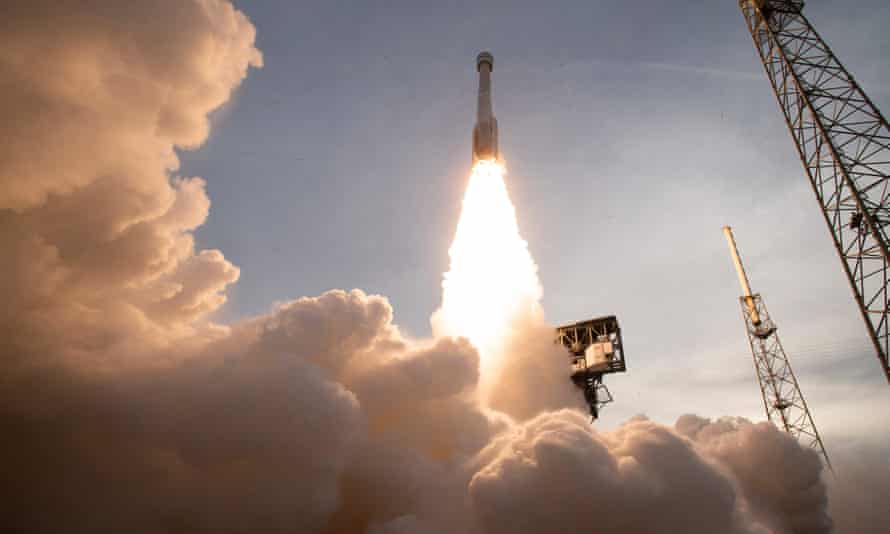Boeing's new Starliner crew capsule has docked for the first time with the International Space Station, completing a major objective in a crucial test flight.
The rendezvous of the gumdrop-shaped CST-100 Starliner with the orbital research outpost, currently home to a seven-member crew, occurred on Friday nearly 26 hours after the capsule was launched from Cape Canaveral US Space Force Base in Florida.
The Boeing-Lockheed Martin joint venture United Launch Alliance's Atlas V rocket was used to launch Starliner and it reached its intended preliminary altitude 31 minutes after lift off.
After more than two years of delays and costly engineering setbacks, Boeing said there was no risk to the rest of the spaceflight because of the two faulty thrusters.
The two vehicles flew over the south Indian Ocean off the coast of Australia before docking with the International Space Station.
It was the first time that both of the Commercial Crew Program partners were attached to the space station at the same time. The Crew Dragon capsule has been docked to the space station since April.
Much was riding on the outcome, after an ill-fated first test flight nearly ended with the vehicle's loss, due to a software glitch.
Boeing scrubbed a second attempt to launch the capsule last summer due to problems with the Starliner's propulsion system.
The two companies sparred over what caused fuel valves to shut and who was responsible for fixing them, as reported last week, as Starliner remained grounded for nine more months.

After this week's flight, Boeing said it resolved the issue with a temporary fix.
Boeing said it was looking for a cause of the failure of the thrusters after Thursday's launch, but that the capsule's temperatures remained stable.
Steve Siceloff, a Boeing mission commentator, said during the Nasa webcast that this is all part of the learning process for operating Starliner.

The first private crew to return from the International Space Station.
The capsule will leave the space station on Wednesday and land in the New Mexico desert.
Boeing is trying to climb out of crises in its jetliners and space defence unit, and a success is seen as crucial. The Starliner program has cost $600m in engineering setbacks.
If the current mission goes well, Starliner could fly its first team of astronauts to the space station as early as the fall.
For now, the only passenger was a research dummy, named Rosie the Rocketeer, who was strapped into the commander's seat and was collecting data on crew cabin conditions during the journey.
A crew of three Nasa astronauts, a European Space Agency astronaut from Italy and three Russian cosmonauts are currently on the platform.
Nine years after the space shuttle program ended, the US space agency has had to rely on the Falcon 9 rockets and Crew Dragon capsule from Musk's company to fly astronauts.
The only other option was to hitch a ride on a Russian spaceship.